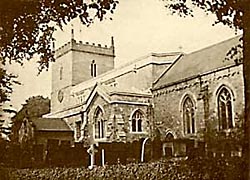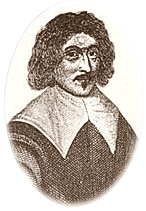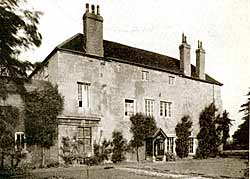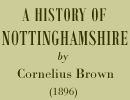< Previous | Contents | Next >
East Bridgeford and Shelford

St Peter's Church, East Bridgeford in 1914, shortly after restoration work had been completed. The tower was rebuilt in 1778; the chancel contains Norman work.
On the brow of a hill overlooking the valley of the Trent stands the ancient village of East Bridgeford, about two miles from Bingham. Bridgeford was the site of the Roman station Margidunum, mentioned in the sixth Iter of Antoninus. Stukeley specifically avers that he saw ‘the Roman foundations of walls and floors of houses, and coins and other relics have been dug up on Castle Hill close by. In Norman times the village was part of the fee of Roger de Builli, and, like many others, paid tithes to the Priory of Blyth. The successive owners of Bridgeford have been the powerful Bysets, the Deyncourts, the Scropes, and the Babingtons. It was left to Sir John Babington’s sister, and from her it passed to Lord Sheffield, who sold it to ‘a gentleman of means,’ Mr. John Hacker, about the year 1590.
Mr. Hacker and his wife Margaret took up their residence at the Hall, and there is an entry in the parish register of the baptism of one of their daughters in 1593. The family comprised four sons and two daughters, as the inscription on their monument testifies. Their eldest son Francis succeeded to the estates, and his son, also named Francis, was the Parliamentary soldier renowned in the Civil War. He was married in 1632 at St. Peter’s Church, Nottingham, to Isabella Brunts, of East Bridgeford, one of the four daughters of Gabriel Brunts, who is still commemorated in Bridgeford Church by a brass.

Colonel Francis Hacker.
Colonel Hacker was one of the most important actors in the thrilling scene at Whitehall when Charles I. suffered the penalty of death: the warrant for the execution of the monarch was placed in his hands, and he had to makc arrangements for carrying out the sentence. According to Colonel Huncks, who was associated with him in the duty, Hacker hesitated in signing the warrant; but Cromwell, taking up a pen, wrote something, which was not seen by Huncks, but was handed to Hacker, who then affixed his signature.
‘Sire, it is time to go to Whitehall,’ said Hacker to the monarch on the fatal morning, and the King came forth from his prison to the scaffold, where the Colonel still seemed to have the chief command.
‘Hacker, you will take care of my body?’ said the King just before the last act, and soon after the headsman dealt the awful blow which severed his Majesty’s head from his body.
Hacker continued to support Cromwell to the end of the Protector’s days, but though he was offered a knighthood, and was presented with two swords, he refused to aid Richard Cromwell to occupy the position of Oliver.
When Charles II. ascended the throne, Colonel Hacker was arrested for the part he took in the execution of the King. Entries in the Lords’ Journals show that Mrs. Hacker was sent with an escort to the house at Bridgeford for the original warrant of execution, which had been deposited there. The document was given up to the Lieutenant of the Tower, who presented it to the Lords. Hacker was condemned to death, and was executed at Tyburn, October 19, 1660 his body being buried in the City by his friends.
Two brothers of the Colonel, named Thomas and Rowland, who had espoused the opposite side, were zealous soldiers for the King. In a skirmish at Colston Bassett Thomas fell, and was buried at Bridgeford in 1643; while Rowland, who was a Colonel in the Royalist forces, received from the King permission to hold his brother’s estates. He seems to have repurchased the greater portion of them, and, dying in 1674, was buried in Bridgeford Church.

Shelford Manor in the 1920s. The building dates from the 17th-18th centuries and incorporates masonry from Shelford Priory, an Augustinian priory founded around 1160-80.
The old Hall is still in the possession of representatives of this historic family; and besides the interest attaching to it as having been the repository of the death-warrant of King Charles, it has been often visited by celebrated men. Dr. Gilbert Sheldon, Warden of All Souls’, Oxford, and sometime Archbishop of Canterbury, spent some years of retirement here after the Parliament Commissioners deprived him of his place in the University. Thoroton says he was well pleased with such a retreat close to the smiling Trent; as, indeed, all who visit the village must be to this day. In the reign of Henry II., Ralph Haunselyn owned considerable property at Shelford, near Bridgeford; and to his piety is attributed the establishment there of a priory of Austin canons. He dedicated it to the Virgin Mary, and endowed it with lands; the life of the canons who lived under one roof being strictly regulated by the statutes of their order. John de Nottingham heads the list of the Priors of Shelford, while the last was Robert Dickson; and Tanner tells us that shortly before the dissolution of the monasteries there were twelve canons in residence here. To the famous Act of Henry VIII. the Stanhopes of Rampton owe their introduction to Shelford. In 1537 Henry granted, by letters patent, the priory to Michael Stanhope, son of Sir Edward Stanhope, of Rampton, Notts; and two years later the King endowed him with the manor and all the lands that the monastery had owned in the county.
The Stanhopes had a distant connection with royalty; and with the ardour they displayed in the public service, there is no wonder that they obtained speedy advancement. Lady Jane Seymour, one of the King’s wives, was sister to Edward, Duke of Somerset, who married Anne, Michael Stanhope’s half-sister. Michael was selected for the governorship of Hull, was knighted, and made Shelford Priory his residence.
When the Protector Somerset was in the zenith of his power, Michael Stanhope was high in the counsels of the nation; but on the arrest of the Duke for high treason Stanhope shared his downfall.
By some Anne Stanhope, who was described as a ‘violent woman,’ is held responsible for the calamities which befell the Duke and her brother, through having urged the Protector to adopt a ruinous policy. Whether this be so or not, Somerset, Stanhope and others met their doom in 1552. Lady Anne Stanhope lived a long widowhood at Shelford, and at her death in 1587 she was buried in Shelford Church, where a noble monument exists to her memory. Her eldest son, Sir Thomas, succeeded to the property, and his grandson Philip was created, in 1628, Earl of Chesterfield.
The seat of the Stanhopes was probably one of much magnificence and importance, for Camden in 1586 says, in his reference to Shelford: ‘It is the seat of the famous family of Stanhope, knights, whose state and grandeur in those parts is eminent and their names renowned.’
In the time of the Civil War Shelford Manor was garrisoned for the King under Colonel Philip Stanhope, the first Earl’s son. Standing near the Trent, between Shelford and Bridgeford, walled and moated, the house presented a formidable front to the enemy. Both the Shelford and Wiverton garrisons were most obnoxious to the Parliamentarians, and General Poyntz and Colonel Hutchinson resolved to effect their reduction. Mrs. Hutchinson gives one of her characteristic narratives of what took place at Shelford, where the Colonel rested at night. ‘When he came thither,’ she says, ‘a few of the Shelford soldiers were gotten into the steeple of the church, and from thence so played upon the garrison’s men that they could not quietly take up their quarters. There was a trapdoor that went into the belfry, and they had made it fast, and drew up the ladders and the bell-ropes, and regarded not the Governor’s threatening to have no quarter if they came not down, so that he was forced to send for straw and fire it and smother them out.’
In this proceeding a boy was dislodged who had formerly been in the Colonel’s service (but was taken by the Cavaliers), and made to point out a vulnerable part in the defences of the manor.
A full account of the siege is given by Mrs. Hutchinson, from which it appears that Colonel Stanhope was wounded and died, as also were some of his followers, while 140 were made prisoners by the Parliamentary force. General Poyntz also gave an official account of the engagement. At night the house was set on fire, and Thoroton, writing in 1677 a description of the locality, says Mr. William Stanhope was ‘making some building to the walls which stood after the fire.’ Upon the site now stands a capacious residence. The outline of the moat, which formerly surrounded the fortified manor, can still be discerned; while armour, cannon-balls, and other relics of the attack have frequently been found.
In the church are a piece of sculpture by Chantrey, representing Lady Georgiana West, who died in 1824, and a brass set in marble to the late Countess of Carnarvon. The famous Earl of Chesterfield, statesman and author, to whom Dr. Johnson wrote his memorable letter, is interred on the south side of the chancel.
